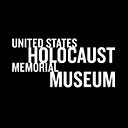What We Lose When We Ignore Holocaust History in North Africa

A profound change in the way the Holocaust and its victims and geography are understood is underway. Jews, Christians, and Amazigh and Arab Muslims share a Holocaust history that is just beginning to be explored. This month, the anniversary of the Allied invasion of Sicily from their foothold in North Africa, marks an occasion to broaden our understanding of the Holocaust and World War II.
The roughly 470,000 Jews of North Africa were subjected to the violence and racial legislation of not one but three World War II regimes: the Nazi Third Reich, the fascist leadership of Italy, and the French Vichy regime. Tunisia was occupied twice — first by Vichy (summer 1940 to November 1942) and then by Nazi Germany (November 1942 to May 1943).
At the hands of these occupying powers, North African Jews and some Muslims were targets of race laws, internment, and spoliation, although most were not deported to the death camps of Europe. Libyan Jews with British passports were among the exceptions: They were deported first by the Italians, to internment camps in Italy, and subsequently by the Germans, to Bergen Belsen. Additional, unknown numbers of North African Jews were deported from France. Among them was the Tunisian Jewish boxer Messoud Hai Victor Perez, 1931 Flyweight champion, who ultimately died in a death march after being interned and surviving forced labor in Auschwitz.
North Africa and the Sahara also became a site of internment and slave labor for the region’s Muslim and Jews. In Vichy camps across the Sahara, these slave laborers toiled on a fantastical project that would never see completion: a trans-Saharan railroad meant to link Niger, in West Africa, to the Mediterranean coast. The French dreamed this railway would tie lucrative sub-Saharan, Saharan, and North Africa markets to the continent. The Nazi regime in Germany envisioned the same tracks connecting a German empire in Europe to future colonies in Africa.
Within Saharan camps, prisoners experienced hard labor, disease, vermin, extreme temperatures, and paltry provisions. Mohammed Arezki, an Algerian Muslim nationalist imprisoned in Djenien Bou Rezg, described that camp’s internee population as including North African Jews, Spanish Republicans, Algerian Muslim communists, and Algerian Muslim sheiks, the eldest in his 84th year. Bernard Lecache, the charismatic founder of the Paris-based “International League against Anti-Semitism and Racism,” was imprisoned there, too.
Max Aub, a French-born poet of a Jewish mother and German father, lived in Spain and Mexico before returning to fight with the Republicans in Spain. In France during its occupation, he was denounced as a “Red” and deported to the labor camp of Djelfa, in southern Algeria. Throughout his internment and forced labor, Aub read and wrote poetry, the words offering sustenance denied by the barren landscape around him.
For decades, students and scholars of Holocaust history have ignored the experiences of those like Arezki, Lecache, and Aub — Jewish, Christian, and Muslim victims of Nazi and fascist oppression in North Africa. The reasons are various. In Europe and the United States, there has been an impulse to view Holocaust history as a continental story, framed by the boundaries of Europe. So too in Israel, where hundreds of thousands of European Jewish survivors resettled. Israeli Jewish youth of North African and Middle Eastern heritage (along with Muslim citizens of the state) are expected to embrace the public commemoration of European Holocaust history while their forebears’ stories are sidelined. Scholars in North Africa, for their part, have avoided this historical chapter, fearing that a focus on North Africa’s Holocaust history might turn a spotlight away from the legacy of colonial violence against Muslims.
This trend is slowly reversing. Institutions like the United States Holocaust Memorial Museum (which recently published a new set of Holocaust Encyclopedia articles on the Holocaust in North Africa), Yad Vashem, and University of Southern California Shoah Foundation are helping to shed light on this little understood aspect of Holocaust history (the latter two have been collecting North African Jewish Holocaust testimonies). North African writers are probing the Holocaust era, too, sometimes despite a degree of personal risk. We, scholars of North African and Jewish Studies, have just published one of the first comprehensive, English-language accounts of the Holocaust and North Africa.
Still, the crumbling camps of the Nazi, Vichy, and Italian fascist regimes across North Africa and the Sahara bear no historical markers. The history of the Holocaust in North Africa does not find its way into most Arabic, French, Hebrew, Italian, German, and English textbooks. We are running out of time to collect North African Jewish and Muslim testimonies of the Holocaust era; if we delay further, our ability to reconstruct history will be forever impaired.
Aomar Boum and Sarah Abrevaya Stein are co-editors of The Holocaust and North Africa (Stanford University Press, 2018). Boum is associate professor of anthropology at the University of California, Los Angeles, and faculty fellow at the Université internationale de Rabat, Morocco. Stein is Sady and Ludwig Kahn Director, Alan D. Leve Center for Jewish Studies, and Maurice Amado Chair in Sephardic Studies at UCLA. The authors spoke about the reach of the Holocaust into North Africa at a May 21, 2019, public program at the US Holocaust Memorial Museum. Watch video of the program.
